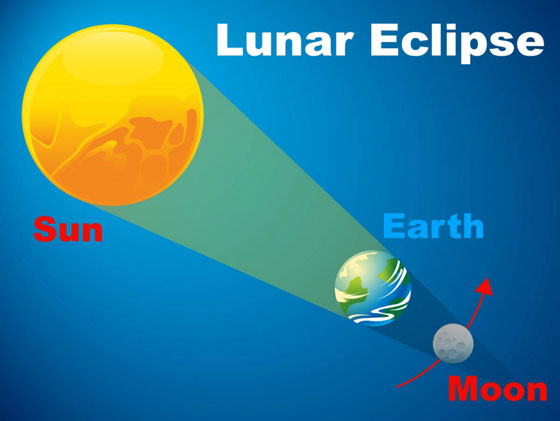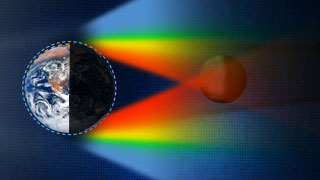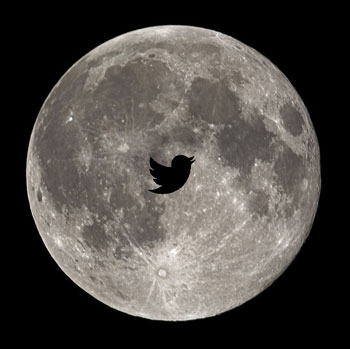

If you’ve been online lately, you’ve probably heard about the “Super Blue Blood Moon Eclipse” coming up on January 31, 2018. What’s this all about?
Well, there are three lunar events happening during the pre-dawn hours that day:
- The 2nd full Moon of the month will occur. When there are two full Moons in a month, the 2nd one is called a “Blue Moon.” The first full Moon of January occurred on New Year’s Day.
- This full Moon is a so-called “supermoon” because it will appear a bit larger and a bit brighter than a normal full Moon. This is because this Blue Moon occurs when the Moon is close to “perigee” — the Moon’s closest approach to Earth.
- A lunar eclipse will occur early that morning, making the Moon appear to be reddish (like blood) in color.
Put all three together, and you get the “Super Blue Blood Moon Eclipse.”
What’s more, this is the first Super Blue Blood Moon Eclipse visible from the western hemisphere in 150 years.
Here’s a NASA video about the Super Blue Blood Moon:
-

The Moon will pass through the Earth’s shadow on January 31, 2018, resulting in a lunar eclipse. On that evening the Moon will be in the Name A Star Live constellation Cancer.
Who Can See the Lunar Eclipse
If you’re in the U.S. you’ll need to get up early the morning of Jan. 31 to see the eclipse, before sunrise. The best views will be in the western U.S. The following NASA diagram shows when the Moon will be eclipsed (during the “umbra” phase) in Pacific Standard Time. The “Moonset Times” listed are for major cities across the U.S., and show when the Moon will set below the western horizon. For example:
- If you live in New York City, the Moon will set at 7:06 am EST the morning of Jan. 31. The Moon will not enter the “umbra” phase until around 4 am PST that morning, which is 7 am EST. So if you’re lucky, you might see the eclipse for a few minutes as it just begins. Then the Moon will set. So it won’t be much of a show for you.
- But if you live in Los Angeles, the Moon will set at 6:57 am PST, a full 50 minutes after the Moon leaves the “umbra” phase. So — assuming the weather permits AND you get up early enough in the morning — you can see the entire eclipse!
The full eclipse will be visible from New Zealand, most of Australia, central and eastern Asia, India, the Middle East and Eastern Europe.

Credit: NASA
- Your local news media will undoubtedly inform you as to when exactly to look for the eclipse.
The Blood Moon

During the eclipse, the Earth’s shadow will gradually creep across the lunar surface. As the Moon grows darker and darker, it will begin to appear reddish/orange. When fully covered by the Earth’s shadow the Moon will be said to be a “Blood Moon.”
The Moon will appear red/orange during the total eclipse because the Earth’s atmosphere acts like a giant prism that refracts (bends) the white light of the Sun. Blue light scatters more readily than the other colors of sunlight. (This, BTW, is why the sky is blue!) The red light is refracted such that it dominates the light we see during a total lunar eclipse.
The Supermoon

The Moon revolves around the Earth in an oval-shaped orbit. Full Moon can occur at various points in this orbit. Sometimes we see a Full Moon when the Moon is nearest to us (as in the diagram above). The Moon thus appears larger to us than it otherwise does, hence the name “Supermoon.”
Get our Moon Tweets!

Our Moon Tweets let you know when the Moon is in a Name A Star Live constellation.
Did you know you can use the Moon to identify where your star’s constellation is in the night sky? Follow us on Twitter where we let you know when the Moon appears in a Name A Star constellation (area of the night sky).
Name A Star Live offers some really good tools to learn about the night sky and find your star’s constellation. Visit our website to learn about our Virtual Planetarium software and planisphere constellation finder!
Follow us on Facebook, Twitter, Instagram and Pinterest!